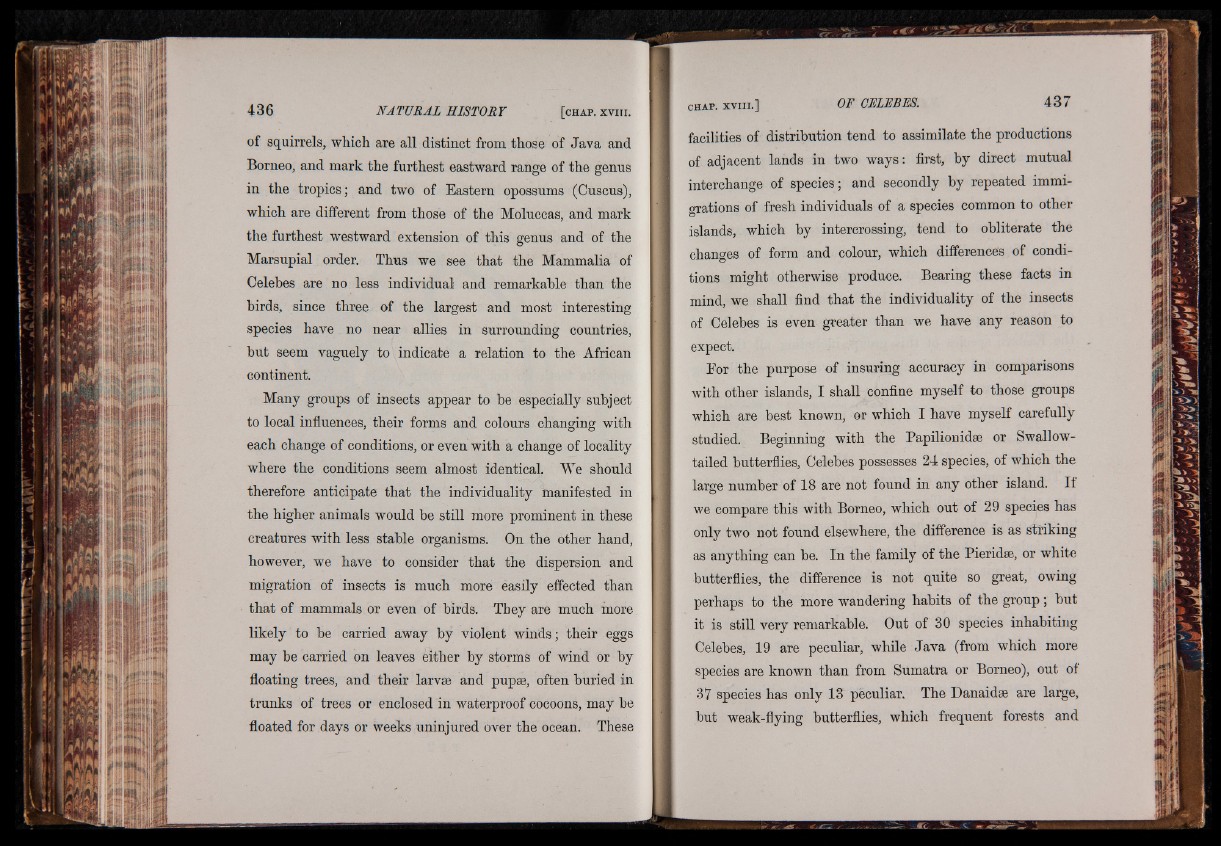
of squirrels, which, are all distinct from those of Java and
Borneo, and mark the furthest eastward range of the genus
in the tropics; and two of Eastern opossums (Cuscus),
which are different from those of the Moluccas, and mark
the furthest westward extension of this genus and of the
Marsupial order. Thus we see that the Mammalia of
Celebes are no less individual and remarkable than the
birds, since three of the largest and most interesting
species have no near allies in surrounding countries,
hut seem vaguely to indicate a relation to the African
continent.
Many groups of insects appear to be especially subject
to local influences, their forms and colours changing with
each change of conditions, or even with a change of locality
where the conditions seem almost identical. We should
therefore anticipate that the individuality manifested in
the higher animals would be still more prominent in these
creatures with less stable organisms. On the other hand,
however, we have to consider that the dispersion and
migration of insects is much more easily effected than
that of mammals or even of birds. They are much more
likely to be carried away by violent winds; their eggs
may be carried on leaves either by storms of wind or by
floating trees, and their larvae and pupae, often buried in
trunks of trees or enclosed in waterproof cocoons, may be
floated for days or weeks uninjured over the ocean. These
facilities of distribution tend to assimilate the productions
of adjacent lands in two ways: first, by direct mutual
interchange of species; and secondly by repeated immigrations
of fresh individuals of a species common to other
islands, which by intercrossing, tend to obliterate the
changes of form and colour, which differences of conditions
might otherwise produce. Bearing these facts in
mind, we shall find that the individuality of the insects
of Celebes is even greater than we have any reason to
expect.
For the purpose of insuring accuracy in comparisons
with other islands, I shall confine myself to those groups
which are best known, or which I have myself carefully
studied. Beginning with the Papilionidse or Swallowtailed
butterflies, Celebes possesses 24 species, of which the
large number of 18 are not found in any other island. If
we compare this with Borneo, which out of 29 species has
only two not found elsewhere, the difference is as striking
as anything can be. In the family of the Pieridse, or white
butterflies, the difference is not quite so great, owing
perhaps to the more wandering habits of the group ; but
it is still very remarkable. Out of 30 species inhabiting
Celebes, 19 are peculiar, while Java (from which more
species are known than from Sumatra or Borneo), out of
37 species has only 13 peculiar. The Danaidse are large,
but weak-flying butterflies, which frequent forests and